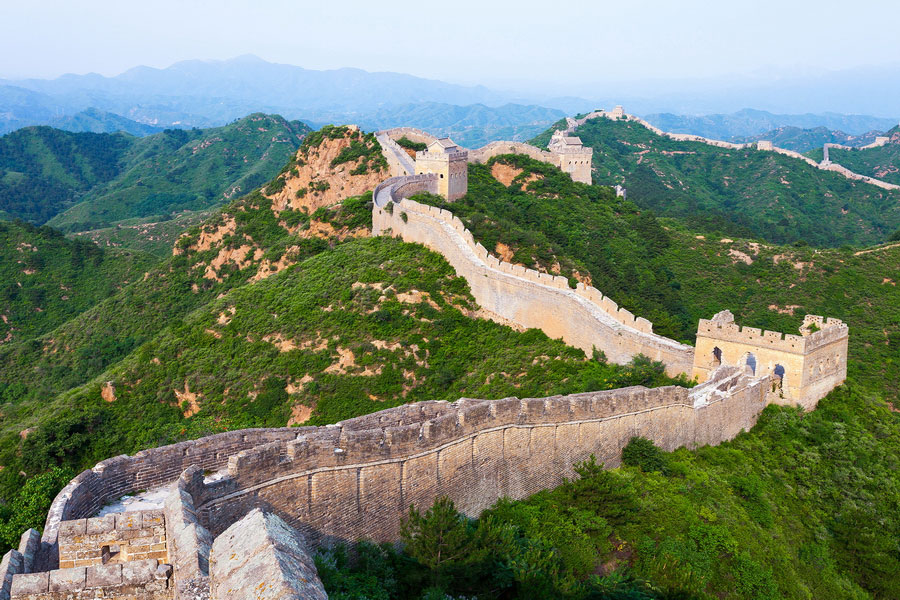
Among the many sections of the Great Wall of China – one of the most impressive architectural feats in human history – Badaling is the most famous and most frequently visited. Located just 70 kilometres (43.5 miles) from Beijing, it was the first section opened to tourists and remains a popular starting point for exploring this iconic monument. Wide walkways, well-developed infrastructure, and scenic views of the surrounding mountains make Badaling a convenient and accessible choice for those wishing to experience the Great Wall's history without giving up modern comforts. This Badaling Great Wall guide will help you plan your visit to Badaling, offering essential facts and practical tips to know before you go.
Location: Yanqing District, Beijing
Total length: 7.6 km (12.2 miles) (including unrestored sections)
Section Open to visitors: 3.7 km (5.6 miles)
Number of towers: 19
Opening hours
Daytime:
High season from April 1st to October 31st: 6:30 to 16:30 everyday – last admission at 16:30.
Low Season: From November 1st to March 31st: 7:30 to 16:00 everyday – last admission at 16:00.
Night time:
From April 30th to October 7th: 18:30 to 22:00 – last admission at 21:00.
Badaling Great Wall Tours
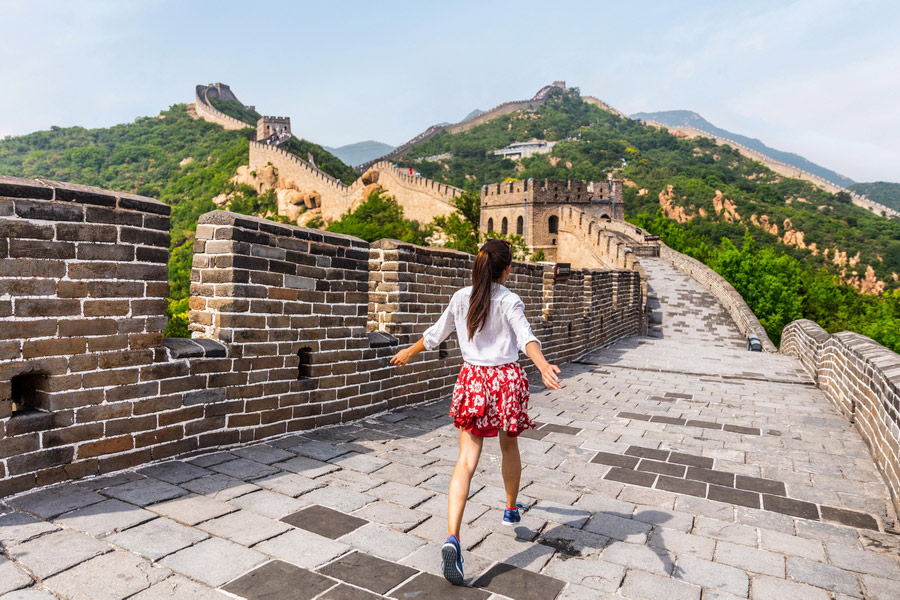
Advantour's carefully planned itineraries introduce you to China’s most iconic sights as well as its lesser-known corners, filling your journey with rich experiences and lasting memories.
One-day trip to the Great Wall of China
Step into history on an engaging one-day tour of the famous Badaling section of the Great Wall of China. With an experienced guide, you’ll walk along its ancient steps and take in breathtaking panoramic views. This excursion is a highlight of our 10- and 12-day China tours.
Travel through China’s major cities – Beijing, Pingyao, Xi'an, and Shanghai – and discover legendary historical and cultural landmarks, authentic highland villages, lively city streets, and the distinctive flavours of local cuisine.
For those eager to explore even further, our 12-day itinerary is ideal. It includes all the highlights of the 10-day tour, plus the stunning Guilin region. You’ll visit the Longsheng rice terraces, marvel at the Reed Flute Cave and Elephant Trunk Hill, and stop by a pearl factory to see how these treasures of the sea are created.
Best Time to Visit Badaling Great Wall

The best time to visit the Badaling Great Wall is in spring (April–May) and autumn (September–October), when the weather is pleasant and the surrounding landscapes are especially vivid and scenic. During these seasons, temperatures are moderate and rainfall is minimal.
To avoid large crowds, plan your visit for a weekday and aim to arrive early in the morning. On weekends and national holidays – particularly during Golden Week in early October – the number of visitors increases significantly, which may slow your pace and impact the overall experience.
For those interested in the festive atmosphere, consider timing your visit with one of China’s major national celebrations. Highlights include Chinese New Year (late February to early March according to the lunar calendar), the Great Wall Red Leaves Festival (October and early November), the Dragon Dance at the Wall (January or February), the Summer Resort Festival (June to August), the International Mountaineering Festival (September), and the Great Wall Apricot Festival (March and April).
History of the Badaling Great Wall
The Badaling section of the Great Wall of China was constructed during the Ming Dynasty (1368–1644), a period when strengthening the empire’s northern defences was a top priority. Thanks to its strategic location, Badaling played a vital role in protecting key routes leading to Beijing. Its name, which can be translated as “giving access in all directions”, reflects this importance: several major roads linking the capital with surrounding regions passed through this section.
Compared to other parts of the wall, Badaling is taller and more robustly built, underscoring its critical defensive function. However, starting in 1644, when the Qing Dynasty came to power, the Great Wall gradually lost its military significance. Over the following centuries, up until the end of the imperial era in 1911, Badaling was no longer used as an active fortification.
A new chapter in the site’s history began after the founding of the People's Republic of China. Restoration efforts started in 1949, and in 1957, Badaling became the first section of the Great Wall to open to the public. Since then, it has become one of China’s most iconic and frequently visited landmarks. In 1987, Badaling was officially inscribed on the UNESCO World Heritage List, and in 2007, it was named one of the New Seven Wonders of the World – recognised not only as a symbol of national pride but also as a cultural treasure for all humanity.
Things to Do at the Badaling Great Wall
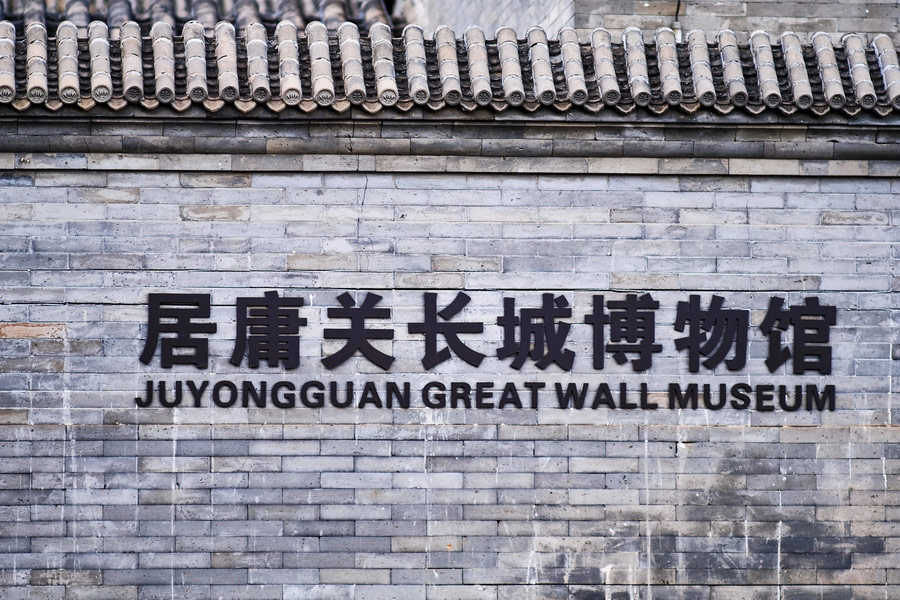
Places to Visit at the Badaling Great Wall
In addition to walking along the most famous section of the Great Wall of China, visitors to Badaling can explore several nearby attractions. This section highlights some of the key sites and activities that enhance the overall experience.
Badaling Bear Paradise is a distinctive wildlife park dedicated to the conservation, care, and breeding of Himalayan (white-bellied) bears. The park was established to help protect this species and to educate the public. The bears live in spacious enclosures featuring rock pools and trees, allowing visitors to observe their natural behaviours. Scheduled feeding sessions, which are both informative and entertaining, are held at select times. The park also features educational displays about bear ecology and their role in the environment. Situated at North Tower 11, you can exit from here rather than retracing your steps, and it serves as an excellent stop to have a rest.
Located near the Badaling Wall, the Great Wall Museum of China is a major cultural and educational site. It explores the historical, architectural, military, and symbolic significance of the Great Wall, as well as its cultural impact on art, literature, and modern Chinese identity.
Entertainment, Parks, and Shopping at the Badaling Great Wall
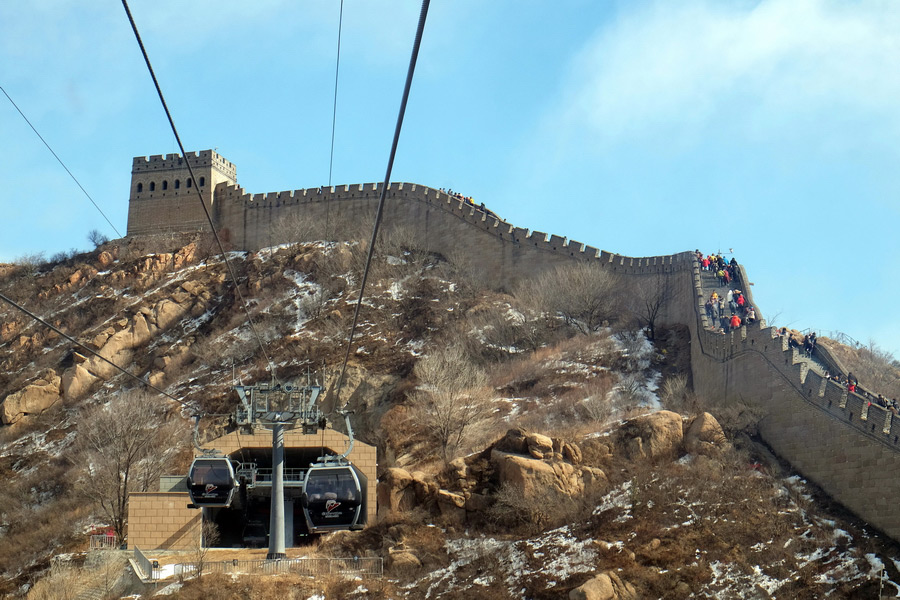
Entertainment at Badaling
Explore the area featuring a funicular, a cable car, and a toboggan ride, all of which add an adventurous touch to your visit.
The Badaling cable car is more than just a means of transport. From the moment the cabin lifts off, passengers are treated to sweeping views of forested slopes, dramatic gorges, and stretches of the ancient wall. In autumn, the ride is especially striking as red, gold, and burgundy leaves blanket the hillsides, creating a vivid backdrop for the Great Wall as it snakes across the landscape.
The Badaling Cableway provides a smooth, scenic ascent to the towers of the Wall in an enclosed cabin along the mountainside. Gliding above forest and stone, passengers enjoy uninterrupted views of the surrounding terrain and the Wall itself. This leisurely ride is perfect for those who want to take in the scenery at a relaxed pace, free from crowds or physical exertion.
For a fun and thrilling finale to your visit, the Badaling toboggan ride is a favourite. The track winds for over a kilometre (approximately 0.62 miles) down green hillsides, with each rider controlling their speed via a hand brake. The descent offers occasional glimpses of the Great Wall and is often cited by visitors as one of the most memorable parts of their trip.
Parks of Badaling
Badaling National Forest Park (Bādálǐng Guójiā Sēnlín Gōngyuán) is a scenic nature reserve located next to the Badaling section of the Great Wall of China. Open from April to November, its peak season falls between mid-October and early November, when the forest bursts into vibrant autumn colours. The park features hiking trails of varying difficulty, with the most popular route taking 2–3 hours. This trail passes several panoramic viewpoints overlooking the Great Wall. While the trails are well-marked, it's advisable to pick up a map at the entrance. Sturdy, comfortable footwear is essential, as some sections may be rocky.
Badaling Wildlife World (Bādálǐng Yěshēng Dòngwù Shìjiè) is a large safari-style zoo located near the Badaling Great Wall. The park is divided into themed zones, offering close-up views of various animals in naturalistic environments.
Badaling Guchangcheng Scenic Spot is a protected historical and natural site surrounding an unrestored section of the Ming-era Great Wall. More an open-air museum than a traditional park, the area preserves the original, timeworn appearance of the ancient fortifications.
Shopping at Badaling
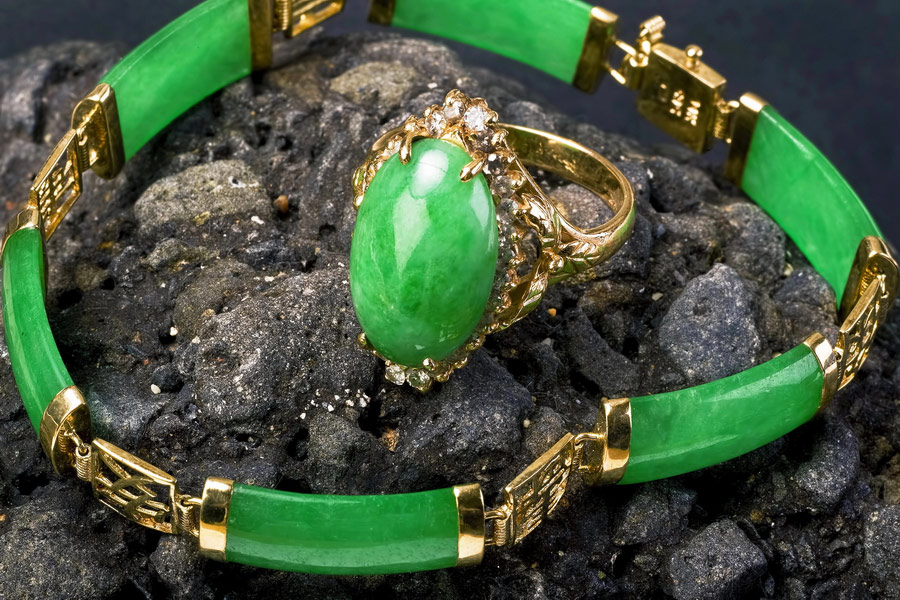
The Great Wall is also an excellent place to find unique souvenirs for yourself or loved ones. Here are some of the most sought-after items available near the Badaling section.
Books
Books on the Great Wall are ideal for travellers interested in its history, architecture, and cultural significance. Choices include photo-rich albums, detailed guidebooks with maps and commentary, and in-depth historical studies. Some titles focus on specific sections such as Badaling, Jinshanling, or Simatai, while others provide a comprehensive look at the entire Wall. These make thoughtful gifts for history enthusiasts, but due to their weight, it's often best to purchase them toward the end of your trip.
Traditional tea pots and Badaling yellow tea
Discover the exquisite Chinese tea services available for purchase in Badaling, where tradition meets elegance. Immerse yourself in the rich culture of China while taking home a beautiful piece that enhances your tea-drinking experience. And make the most of your visit by acquiring local teas produced near the Great Wall.
Visit a vast jade factory in the vicinity of the Badaling Wall, where you can witness a captivating jade carving demonstration, showcasing the intricate creation of a Family Happy Ball, complete with a phoenix and a dragon. Discover the value of jadeite, the world's most expensive jade, renowned for its hardness and unique ability to change colour based on body temperature. Don't miss the opportunity to shop for authentic jade jewellery.
Beyond these exceptional pieces of artwork, you can discover an array of intriguing items in selected shops, including engraved stones and creative laser-cut 3D maps. Explore bamboo carvings depicting the Great Wall as stunning decorative pieces, along with replicas of ancient coins and bronze-style mini vessels. Beautifully packaged freeze-dried fruits adorned with Great Wall illustrations are perfect for unique edible gifts. Don't miss the opportunity to get a commemorative medal engraved with your name and the date of your visit. There is an old Chinese saying, “One who hasn't been to the Great Wall is not a true hero”.
Food at the Badaling Great Wall
The Badaling tourist area offers several dining options, including traditional Chinese restaurants and familiar international fast food chains. Most restaurants are located near the main entrance to the Wall, as well as close to the parking areas and public transport stops. Discover a delightful array of renowned dishes available in the area, complemented by an overview of cafes and restaurants that cater to a diverse range of tastes.
Chinese Cuisine

Indulge in the rich flavours of Chinese cuisine with our selection of mouthwatering dishes, perfect for any occasion.
Begin your culinary journey with Fried Noodles (chǎomiàn), a beloved classic of Chinese cuisine. These stir-fried noodles are cooked with fresh vegetables, eggs, and your choice of meat or seafood, seasoned with soy sauce, and topped with spring onions. Quick and satisfying, it’s the perfect dish to fuel up before a hike.
Next on the list are Dumplings (jiǎozi), filled with savoury meat or fresh vegetables. Boiled or pan-fried, they’re served with vinegar, soy sauce, and spicy condiments. Especially popular in winter, these comforting bites are perfect for warming up on a chilly day.
For a touch of heat, try Gongbao Chicken (gōngbǎo jīdīng), a vibrant stir-fry of tender chicken, peanuts, and vegetables in a zesty chilli-ginger sauce. Its spicy, sweet, and tangy flavours are sure to delight. Looking for a quick bite? Baozi (bāozi) are soft steamed buns filled with meat or vegetables, perfect as a tasty street snack to enjoy on the go.
Finally, enjoy a bowl of Seaweed and Egg Soup (zǐcài dànhuā tāng). This light, hot broth with seaweed and beaten egg is perfect for a gentle, warming lunch on cooler days.
Restaurants and Cafes at Badaling
Badaling Restaurant
Located within the tourist complex, Badaling Restaurant serves as the main dining venue, featuring a spacious food court that offers a various selection of Chinese dishes. Although the menu is presented in Chinese, you will find helpful photos accompanying each item, making it easy to choose your meal. Some favourite options include noodles, dumplings, fried rice, meat dishes, and refreshing sweet drinks.
Butik & Akta Kaffe
Situated in an open-air setting, Butik & Akta Kaffe is a charming coffee stall that serves quick, casual meals, including rice or noodles topped with a variety of delicious options. On a warm day, you can also enjoy refreshing drinks such as bubble tea and ice cream. Although it is not a sit-down cafe, it provides fast service and nearby seating areas, making it an ideal location for a light refreshment without the inconvenience of a long wait.
For travellers who may feel homesick during their journey, international fast food chains such as KFC and Subway are available in Badaling.
Routes of the Badaling Great Wall
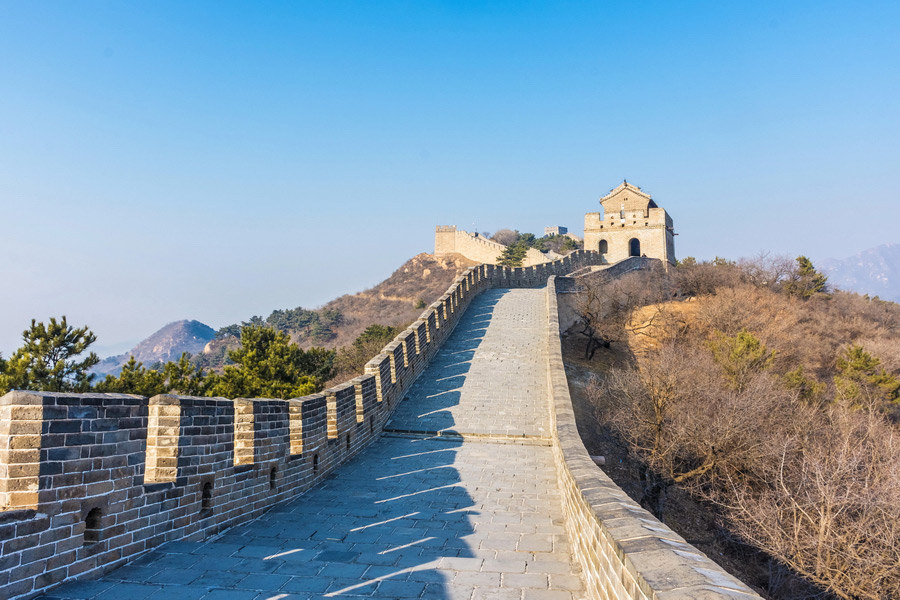
The Badaling section of the Great Wall of China has a single entrance, from which two separate routes lead in different directions, each with its own characteristics to consider before choosing the route you will follow.
The Northern Route
- Number of towers: 12.
- The more popular and frequently visited route.
- Features a steep ascent, leading to the highest point of the Badaling section (Tower No. 8, known as HaoHanPo – Hǎohàn Pō), offering the most scenic views.
- Several designated photo spots along the way.
- Best suited for physically fit visitors and more experienced hikers: If you have good endurance, hike from North Tower 7 to Tower 12. This section has fewer visitors and offers stunning panoramic views.
- Lacks shade in many areas, which can be challenging on hot, sunny days.
- Includes information panels detailing the construction and history of the Wall.
- Requires more time to complete – typically 2 to 3 hours.
The Southern Route
- Number of towers: 7
- Less crowded and more relaxed.
- Features a gentler incline, ideal for visitors who prefer a leisurely walk, including families with children and older travellers.
- More manageable in hot weather.
- Can be completed more quickly – usually in 1 to 2 hours.
Transport at the Badaling Great Wall
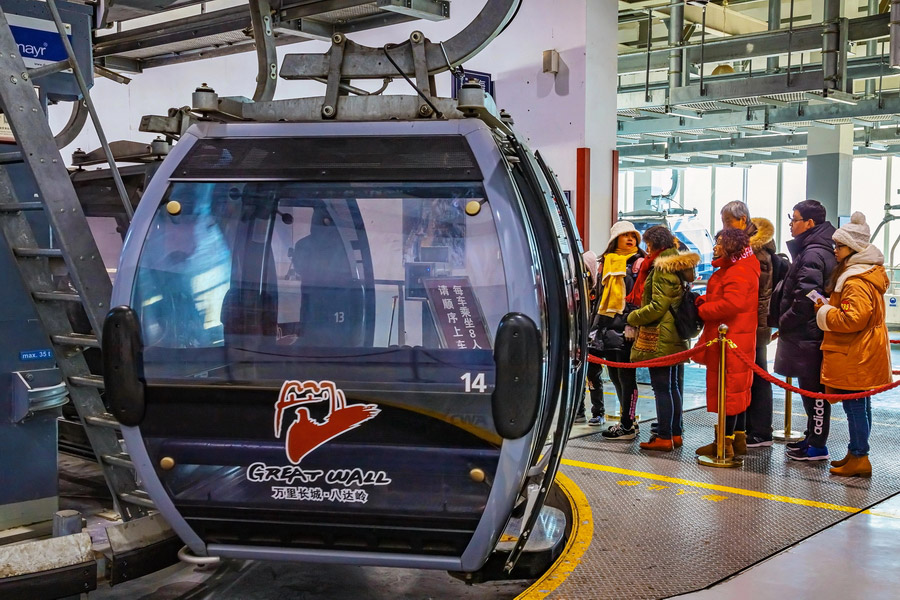
Transportation around the Badaling Great Wall is designed to accommodate large numbers of visitors and various mobility needs. In addition to walking, several convenient options enable tourists to reach key points of the Wall with ease. These include a cable car, funicular railway, and toboggan ride, while shuttle buses connect different areas of the tourist complex.
North Cable Car (North Route)
The cable car is the fastest and most comfortable way to reach one of the most scenic points on the Great Wall – Tower No. 8.
Operating Hours: From 7:30 to 16:00
Upper station: near Tower No. 8 (approx. 868 meters above sea level)
Cabin type: enclosed cabins, 8 passengers per cabin
Toboggan (North Route)
The toboggan offers a fun and unconventional way to descend from the Wall, combining transportation with a bit of amusement.
Upper station: near Tower No. 4 of the North Route
Lower station: at the base of the North Route, near the exit
Vehicle type: individual seated sleds with a lever-operated brake
Maximum load: 130 kg per sled
Note: This ride is available only on the North Route and should not be confused with Tower No. 4 on the South Route.
South Cable Car (South Route)
The cable car offers a relaxed ascent to Tower No. 4 along the quieter South Route – ideal for visitors seeking a peaceful walk with scenic views.
Operating Hours: From 8:50 to 16:00
Upper station: next to Tower No. 4
Travel time: 6 minutes
Cabin type: enclosed cabins, 6 passengers per cabin
Shuttle Buses
Free shuttle buses run between the main parking areas, entrances to both the North and South Routes, Badaling railway station, and the cable car terminals. These buses offer a practical option for saving time and energy, especially for families with children or travellers with limited mobility.
How to Get to the Badaling Great Wall?
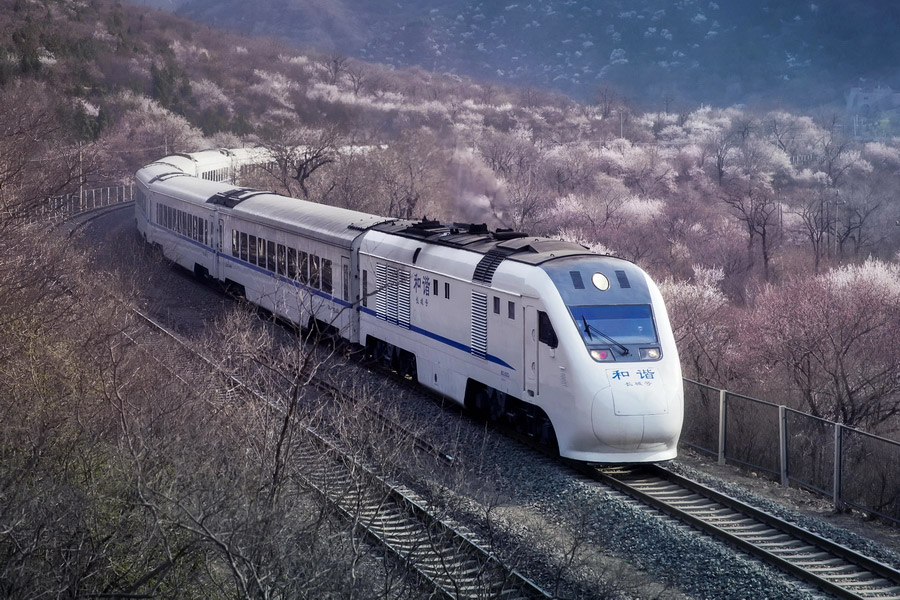
The Badaling section of the Great Wall is one of the most visited due to its accessibility from central Beijing. Below are the main transport options to help you plan your trip efficiently.
By S2 Suburban Train
One of the most economical ways to reach Badaling is by taking the S2 suburban train from Beijing North Railway Station. The journey takes approximately 1.5 hours and arrives at Badaling Railway Station. From there, you can either walk 15 to 20 minutes to the Wall or take a short shuttle bus ride. Second class tickets are low-cost between 23 to 31 CNY/RMB (approximately $3.20 to $4.30; £2.35 to 3.15; €2.75 to €3.70), and unassigned, so arriving early is recommended, especially during peak hours.
For a quicker option, it takes 20 to 60 minutes with the high-speed train from Beijing North or Qinghe stations and it costs 7 CNY/RMB (approximately $1; £0.70; €0.85).
By Bus
Several buses run from Beijing’s Deshengmen stop to Badaling. The most convenient is express bus No. 877, which runs nonstop and drops passengers off at the parking lot next to the Wall’s main entrance. The ride takes about 1.5 hours.
Alternatively, bus No. 919 follows a longer route with many stops, taking up to 2.5 hours. It usually stops near the Badaling area but may not reach the main entrance, requiring a short walk or shuttle ride. While No. 919 is cheaper, it is less convenient except for a return trip to Beijing after 17:00 when last bus No. 877 has left and better suited for travellers with flexible timing.
By Taxi
Taking a taxi from downtown Beijing to Badaling takes about 1–1.5 hours, depending on traffic. This is the most comfortable option but also the most expensive. The official d taxi fare from Beijing is 200 CNY/RMB (approximately $27.90; £20.45; €23.75) but because of the distance Taxi driver may charge up to 600 CNY/RMB (approximately $83.60; £61.35; €71.25). . However, booking an economy ride via Didi (China’s version of Uber) can reduce the cost to 250 to 350 CNY/RMB (approximately $35 to $49, £26 to £37, €30 to €42).
Languages Spoken at the Badaling Great Wall
The primary language spoken at Badaling is Mandarin Chinese (Putonghua). Staff at the visitor centre, ticket offices, souvenir shops, and among tour guides generally speak basic English sufficient to assist with directions, ticketing, and purchases. Tours in foreign languages – including English, French, Spanish, Russian, and Arabic – are available by advance arrangement through tour operators. In the main tourist areas, signage, maps, and informational panels are also provided in English to help international visitors navigate the site with ease. By booking your tour with our agency, you can be confident that you will be accompanied by our guide, who can assist you in interacting with locals and provide you with valuable information about Badaling.
Currency and Payments at the Badaling Great Wall
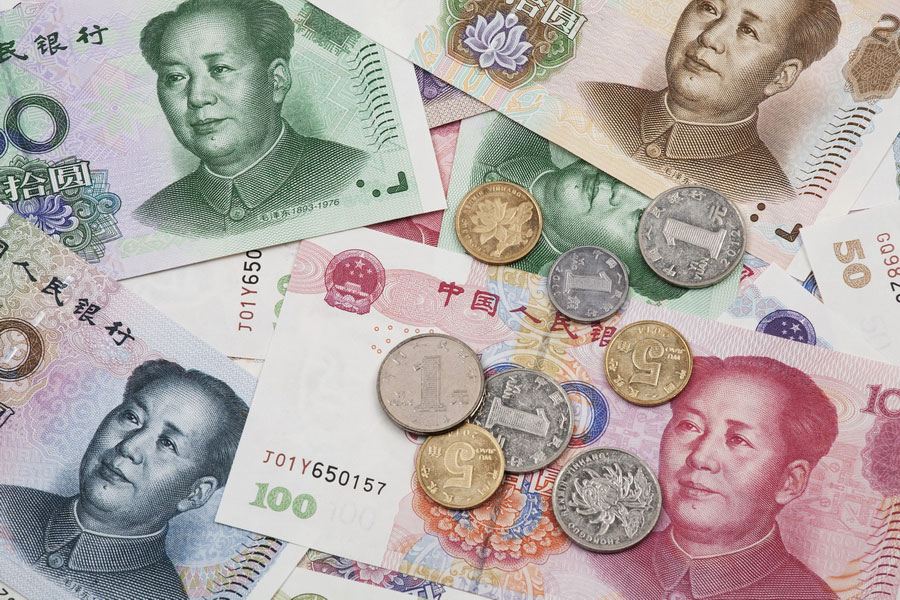
Currency and Cash Preparation
All transactions at the Badaling Great Wall are conducted in Chinese yuan (CNY). Visitors are strongly advised to exchange currency in advance, as there are no currency exchange facilities in the Badaling area. Exchange services are readily available at Beijing airports, major railway stations, and in the city centre.
Cashless Payments
Digital payment platforms such as Alipay and WeChat Pay are widely accepted in the tourist area. Foreign visitors can link international credit or debit cards to these apps, allowing for convenient cashless transactions.
Estimated Expenses:
- Entrance ticket: 40 to 80 CNY/RMB (approximately $5.60 to $11.15, £4.10 to £8.20, €4.70 to €9.45).
- Cable car / funicular / toboggan ride: 60 to 150 CNY/RMB (approximately $8.40 to $20.95, £6.15 to £15.35, €7.10 to €17.75).
- Food and drinks: 5 to 50 CNY/RMB (approximately $0.70 to $7, £0.50 to £5.10, €0.59 to €5.90).
To ensure a smooth visit, it is recommended to carry both some cash and an activated electronic payment method.
Security and Facilities at the Badaling Great Wall
Badaling is one of the most secure and well-maintained sections of the Great Wall of China. The area is equipped with CCTV surveillance, uniformed security personnel, and an on-site medical station. Paths are regularly inspected for damage, and any hazardous areas are either fenced off or temporarily closed to ensure visitor safety.
Despite the high level of organisation, basic precautions are still recommended. The walking routes include both gentle slopes and steep climbs with uneven stone steps, so it’s essential to wear sturdy shoes with non-slip soles.
In warm weather, protect yourself from sun exposure by wearing a hat, applying sunscreen, and bringing plenty of drinking water. Avoid hiking during the hottest part of the day, particularly in summer.
In winter, the ground is sometimes covered with snow and ice, so it is necessary to exercise caution if you plan to visit the Great Wall during this season.
In general, for your comfort, it is essential to carry water and snacks, such as nuts and chocolate bars, with you, as these items are not available for purchase while walking along the Wall.
Accessibility for Visitors with Limited Mobility
Badaling is one of the few sections of the Great Wall designed to accommodate visitors with limited mobility. Unlike many other segments, which feature steep ascents and minimal infrastructure, Badaling offers a thoughtfully designed layout with accessibility in mind.
The complex includes smooth ramps and lifts, and a cable car allows visitors to reach the upper levels without needing to climb stairs.
Important Note: Use of the lift must be booked in advance through the Badaling Visitor Information Centre.
Facilities. For your comfort, the restrooms are located at Tower 1, Tower 4, and Tower 7. Please note that the condition of public restrooms on the Great Wall can vary, with some areas offering only basic portable toilets that might differ from what you’re accustomed to.
To ensure a comfortable visit, it is wise to plan ahead. We recommend using restroom facilities before your journey and bringing your own hygiene products, as some sections may have limited amenities.

